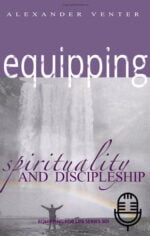Isaiah 9:2, 6-7:
“The people walking in darkness have seen a great light; on those living in the land of deep darkness a light has dawned… For to us a child is born, to us a son is given, and the government will be on his shoulders. And he will be called Wonderful Counselor, Mighty God, Everlasting Father, Prince of Peace. Of the greatness of his government and peace there will be no end. He will reign on David’s throne and over his kingdom, establishing and upholding it with justice and righteousness from that time on and forever. The zeal of the Lord Almighty will accomplish this.”
This is the reading for the first Sunday of Advent, which fell (this year) on 29 November. I was asked to share a message on the meaning of Advent with Following Jesus, the church I previously pastored (see the video presentation). First an explanation and background, then brief reflections on what Advent means for us, focusing on the four names in Isaiah’s text.
The English word advent comes from Latin adventus, meaning arrival or coming. Essentially, the expectation and arrival of an important person or event. Advent is associated with Christmas: the celebration (‘mass’) of the birth of Christ (‘Messiah’). Whether Jesus was actually born on 25 December is not the point. The point is that a day of great joy was chosen to celebrate the coming of God’s King into our world.
Latin adventus is the translation of the Greek parousia (coming, appearance) in the New Testament, used primarily for King Jesus’ return or Second Coming (1 Thessalonians 4:15). When Caesar or an important dignitary in the Roman world came to a village, town, or city, they would prepare and watch and wait in great expectation. As the watchmen saw signs of ‘The Parousia’, they would loudly announce it. Then the rulers and elders would go out to meet the person(s) on the road and welcome them, and escort them back into the village, town, or city. A celebratory party would follow. That’s the meaning of Jesus’ Parousia.
Therefore, advent meant, for the early centuries of Church history, the expectation of the Second Coming of Christ to judge the world. Only from the 6th century did it shift to Jesus’ first coming, his birth and then baptism (his ‘Epiphany’ or appearance to start his ministry). As that tradition developed, four ‘Advent Sundays’ were set to prepare for Christ’s birth on the date of 25 December. Four candles were used to represent four aspects of our waiting expectation of Christ’s mass – that Christ be born anew in our lives and our world.
In short, Advent is a tradition of the Church that developed with varying interpretations and practices, marking the beginning of the annual Christian liturgical calendar.
The lighting of each candle over the four Sundays and the themes they represent point to both the Second Coming and the first coming of Jesus:
Hope – the promise of God’s coming
Waiting – the (prophetic) preparation for God’s coming
Joy – the peace of God
Love – the adoration of God
The four candles and their enlightening themes relate to the four names given to “the child born to us”, the babe of Bethlehem. It’s remarkable how clearly Isaiah saw and spoke, by the Holy Spirit, of the coming Messiah 700 years before Jesus’ birth. “The great light… dawned for all living in deep darkness”, giving certain hope based on promise, activating preparation and joy in anticipation of the coming of God’s Prince of Peace (Shalom).
Though a weak and vulnerable baby, The Great Light shone bright. And continues to shine ever brighter to the ends of the earth. The end is loving adoration of God’s humble King, just as the kings of the east bowed down after their long and arduous journey following the Star of Bethlehem. This torrid year of corona trauma, with its extraordinary challenges, has been a rough road for all of us. So… stop… to reflect on and receive anew the true nature of Christmas, of Christ’s coming into our lives, into our world lost in deep darkness.
What this means is represented in the four names Isaiah gives to the “son given to us”. Names in Semitic usage describe the person’s character and purpose. Earlier Isaiah said that a virgin would conceive and give birth to a son and will call him Immanuel, meaning “God with us” (Isaiah 7:14). God does not abandon us. God becomes one of us. God in human skin. Takes on our weakness. Feels our feelings. Undergoes our temptations. Bears our pain and brokenness. Suffers our sin and death in redemptive love. God with us means…
Wonderful Counsellor:
Jesus, Wisdom of God. God comes as one of us in “the son that is given”, guiding us in how to live life as God purposed. “A little child will lead them” (Isaiah 11:6). God is – especially in these trying times – “wonderful in counsel and magnificent in wisdom” (Isaiah 28:29). Receive Jesus in this way. Ask him for the wisdom you need to respond correctly to what you’re going through, to the trials you face (James 1:2-5). We all need this kind of spiritual direction at this time. And for the year ahead.
Mighty God:
Jesus, Power of God. Jesus came/appeared to Israel in God’s power doing miracles of deliverance and healing. The paradox of the powerless baby who is the Mighty God, the Warrior King defeating evil in all its oppressive forms. Receive Jesus as your Mighty God. Ask him for the miracle you need right now. Furthermore, Mary symbolizes Jesus coming to life in us by God’s power. We take the shape of his life growing in us, which expresses itself through us in signs and wonders to the world around us. How can you express the Mighty God in this way to those in need – giving real Christmas gifts?
Everlasting Father:
Jesus, Love of God. Jesus was the advent (coming/appearing) of the embodied love of God. Jews knew Yahweh as their loving Father who tenderly nurtured them like a mother nurses her baby (Isaiah 49:14-15). Jesus was the human expression of this divine reality. “Everlasting Father” describes divinity – a remarkable name for the baby nursing at Mary’s breast. Everlasting means without beginning or end. God… as Father (and Mother). Eternal Love made flesh. As the child Jesus grew in consciousness, he experienced God as profoundly personal and intimate love in each moment of every day. He called God Abba, Daddy. Because Jesus was perfectly loved, he loved perfectly. He laid down his life in love of us. Close your eyes, open your hands and receive Jesus as the Everlasting Father, Perfect Love. And be an expression and embodiment of that love to others in need.
Prince of Peace:
Jesus, Ruling Shalom of God. God, in Christ, came as one of us to put the world right, to save humanity and planet earth. To make peace through his government of justice and righteousness, grace and truth – in contrast to and in judgement of all other governments. Shalom is peace, God’s wholistic wellbeing, order, harmony and abundance, which is God’s design for all creation. It is, however, based on right relationship with God, self, each other, and creation. “Justice and righteousness” mean ‘right-way-of-relating’ – as God relates. Wrong relationship with God, self, others, and/or creation, is sin and death. It shatters Shalom. Plunges the world into the darkness of death and chaos, disease and disintegration. Ultimately hell on earth! BUT, Jesus came to bring heaven on earth, to restore the rule and reign of Shalom, to make all things new. Receive Jesus as the Prince of Peace. Receive rest. Let him calm your mind, emotions, body. Let him order your heart and relationship rightly. And yes, be an instrument of his peace to those around you.
All of this is Christmas, Christ’s mass. The celebration of Christ, The Great Light, who comes into our world that walks in deep darkness. Therefore, Happy Christmas!





